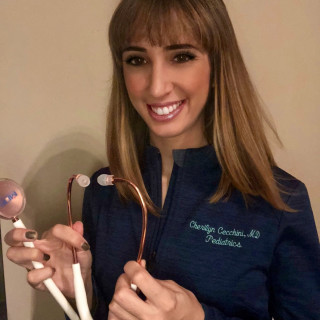
For years, the opioid crisis has been a topic of interest among the adult population. More recently, attention has grown surrounding the pediatric population, as well. In fact, the topic was included in the State of the Union address given by President Trump just a few days ago. He vowed to end the crisis and named it a “public health emergency.”
When discussing true addiction, it is important to remember that it is defined by a disruption in the social functioning of the patient. These patients will spend exorbitant amounts of time seeking and using the drug. Despite adverse effects, the patient continues to use the drug. This differs from physical dependence, which emphasizes the experience of withdrawal symptoms once a substance is discontinued after multiple exposures to the drug.
So, just how serious is this crisis in the pediatric medical world? A recent study published by the American Academy of Pediatrics shows that teens have easy access to prescription painkillers after undergoing common surgeries. This may lead teens to abuse these medications after leaving the hospital. The study, completed by Dr. Calista Harbaugh, pediatric surgery researcher at the University of Michigan’s C.S. Mott Children’s Hospital, examined patients between the ages of 13 to 21 who were opioid naïve after operations such as hernia repair and tonsillectomy. She found that of these 90,000 privately insured patients, 1 in 20 were still getting prescriptions refilled for opioids three to six months following the operation.
Given this realization and the concern that teens have access to opioids for longer than necessary, some states have enforced limitations on the duration of opioids that a physician may prescribe. This means that physicians are only able to prescribe a five-day to weeklong supply of the opioid medication. This approach may help prevent the development of opioid and benzodiazepine tolerance and dependence. Studies have shown that use of opioids and sedatives for more than 5 to 10 days increases the risk of fueling addiction.
Interestingly, the FDA encourages physicians to obtain adequate training about how to appropriately prescribe opioid medications. It recommends the development of straightforward guidelines for physicians to follow when prescribing opioids for pain management in patients whose pain cannot otherwise be controlled with alternative regimens.
As a resident physician, I have attended several lectures that incorporate learning about the escalation of pain management and how to achieve adequate pain relief appropriately with non-opioid and opioid medications. Oversight by an attending physician with more experience is helpful. The challenging moments arise when patients ultimately “doctor shop” and go from one doctor to another in order to seek out additional prescriptions for opioids to feed dependency. There is no formal curriculum that includes the opioid crisis or discusses how to negotiate a pain contract with a patient.
Typically, chronic pain patients are managed by a specific pain doctor or anesthesiologist in the outpatient setting. Most primary care providers will refer these patients once it becomes difficult to manage their pain or potential addiction. Pain specialists have a greater degree of training and are more apt to appropriately manage pain regimens for these patients.
Problems arise when the patient is unable to schedule an appointment at the pain clinic regularly. These patients will often land in the offices of primary practice providers. I believe that pain management specialists should mentor and lecture the primary care providers, including resident physicians, about their general approach so that these providers feel more comfortable developing pain management plans in the interim periods. This also allows for the patient to continue to access appropriate pain medications without turning to illegal avenues.
Ultimately, pediatricians must continue to bring attention to the issue and encourage the practice of limited prescriptions of opioids coupled with the use of other modalities, such as nonsteroidal anti-inflammatory drugs. Dr. Suresh, Arthur C King Professor in Anesthesiology at Northwestern University Feinberg School of Medicine and chair of the Department of Pediatric Anesthesiology at Lurie Children’s Hospital of Chicago, summarized the topic well by saying, “We do need to pay attention to it…it’s a silent killer.”







